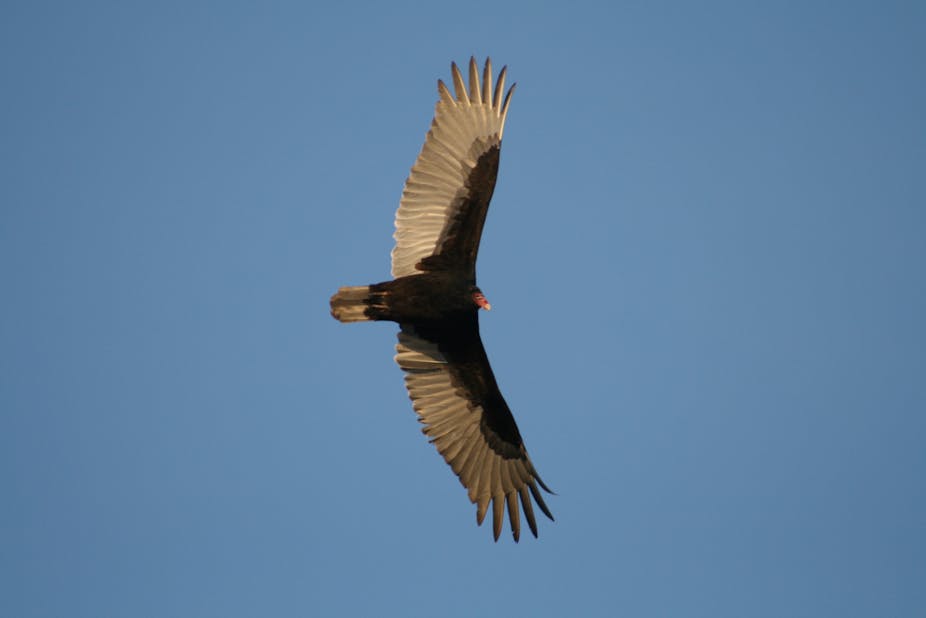The rate of extinction of species today is many thousand times the natural rate. There are even examples that such loss can have serious impact on humans. So a critical question is: what is the role species play in the functioning of our ecosystem and how can we exploit that understanding to better our conservation efforts?
Tony Juniper, a British environmentalist, gave a remarkable example in his book What has nature ever done for us?. He found that the almost complete loss of India’s vultures, due to the use of a common veterinary medicine, cost the economy in excess of $30 billion and had serious implications on human wellbeing. As the vultures no longer clean up dead cattle the number of wild dogs has exploded and cases of rabies have sky rocketed.
The loss of the Indian vulture is a remarkable example more so because these birds once filled the skies of India. But what are the implications of losing species that are not as common as the vulture for the maintenance of essential ecosystem processes?
In a recent paper in the journal PLOS Biology, David Mouillot at the National Center for Scientific Research in France tries to answer this question. He analysed 846 coral reef fish, 2979 alpine plants and 662 tropical trees and concluded that rare species are often those that have the most distinct traits within a community.
Assuming that species with distinct combinations of traits will support quite different functions, Mouillot makes a case that we must rethink conservation strategies. He urges that we must move beyond focusing on mere biodiversity, or iconic and charismatic species, to targeting rare species that perform irreplaceable functions. However, his case rests on the big, and possibly wrong, assumption that distinctive traits have distinctive functions. To what extent does form really translate to function?
If there is anything that the diversity of life tells us it is that there are multiple ways to achieve the same goal, and that the balance of traits that we see in contrasting species represent an almost limitless set of solutions to the challenges that they face.
An example from freshwaters: shredders are thought to be the most important organism in rivers due to their role in initiating the nutrient recycling process. In temperate climate, the shredder community comprises mayflies and stoneflies which, based on the sorts of traits used by Mouillot, would be categorised as being similar in their form. But in warmer climate, such as in Africa, these species are not important for nutrient recycling.

As it happens, until recently it was thought that an entirely different process, based on microbial activity, was driving the function of river systems in tropical climate. Then a chance encounter with a crab led Mike Dobson at the University of Manchester to rethink the microbial theory.
Although radically different from mayflies in northern rivers, it was crabs that were central to nutrient recycling. We can extend this argument by considering the function of species from differing branches of life.
For example, it has long been known that birds play a key role in seed dispersal. But even fish perform the same function. Mauro Galetti at São Paulo State University shows that fish are often viewed as solely a resource for exploitation. But overfishing of these seed dispersers, a serious problem in the Pantanal region of Brazil, could have major implications for forest regeneration and thus on the functioning of this ecosystem.
Mouillot acknowledges that his analysis assumes “the distinctiveness of species-trait combinations does indeed map to distinct ecological functions”, an assumption that may be wrong. So where does this leave us?
The idea of functional insurance and vulnerability that Mouillot presents is an elegant way of thinking about this question. A global database of “functional” traits, describing the role that individual species play in the environment, would be a giant leap towards answering this question. But big gaps in our knowledge of even well-known groups means this is by no means easy.
Projects such as the Biodiversity & Ecosystem Service Sustainability programme in the UK are starting to examine these relationships, but the complex roles and interactions between species, across taxonomic groups, and the influence on ecosystem function will only slowly reveal itself. More than anything, Mouillot’s work has highlighted the lack of our knowledge and the difficulty in closing this gap.

Despite the problems and challenges that Mouillot’s paper raises, the central message they deliver, and the implications for conservation efforts still stand. Taking their findings on face value, assuming that traits map to function, it is critical that conservation investment is rebalanced away from charismatic or high profile species and groups that currently attract the most investment and interest. Loss of rare or less charismatic species could lead to the loss of important ecosystem functions and cause a cascade of impacts across ecosystems.
At the other extreme Mouillot’s assumption could be completely wrong. The commonest species could carry the load, performing the duties of rare species that go extinct.
But the commonest species can disappear in a very short space of time. That is why we must rebalance conservation efforts to build resilience into ecosystems. The focus should be on species that provide a backup for function, not just on their beauty or charisma. In a changing world we must provide nature with a means to adapt, otherwise the losses and implications for all of us could be profound.

